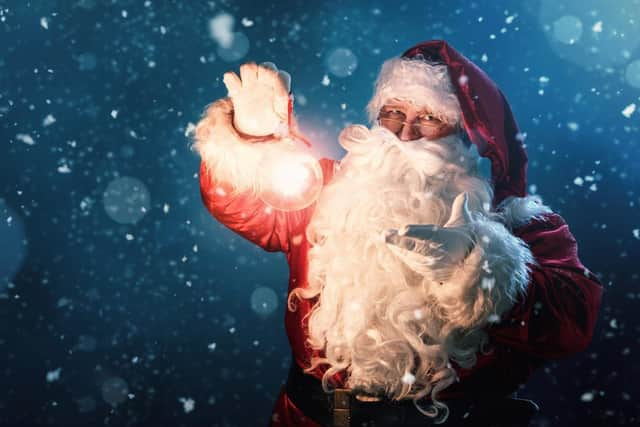Natural selection? The curious evolution of Father Christmas
and live on Freeview channel 276
Take a trip into Christmases past with former primary school teacher Laura Steele of education resource experts PlanBee to find out ...
Winter festivals and rituals have long been held around the winter solstice (the shortest day of the year), to celebrate the end of winter and welcome the arrival of spring. A figure dressed in green with a wreath made of holly, ivy and mistletoe was said to represent the coming of the new season.
Anglo-Saxons: introducing King Winter


Advertisement
Hide AdAdvertisement
Hide AdIn the 5th and 6th centuries, this figure was known to the Saxons as Father Time, or King Winter. It was tradition to dress up as this figure, and then be invited into your neighbour’s homes to eat and drink by the fire. The belief was that if you were kind to Father Time, the winter would be milder.
Vikings: Norse god Jul
When the Vikings settled in Britain in the 9th century, they held midwinter celebrations. It was said that the Norse god, Odin, disguised himself as a character called ‘Jul’, wore a blue-hooded cloak and brought gifts to the good and punishments to the bad!
Tudors: the spirit of good cheer
In the 15th and 16th centuries, the idea of Father Christmas (or Old Man Winter as he was also called) first appeared. He was seen as a figure that was linked to entertainment, such as feasts and games. He was depicted as a large man dressed in green or red robes who embodied the festive spirit of good cheer.
A Victorian revival
After the Puritans prohibited the celebration of Christmas in 1644, the concept of Father Christmas became less popular, until it was revived in the Victorian era. By the 19th century, family life was seen as much more important, and Christmas became a time for children as well as adult celebration. Father Christmas was now known as a bringer of gifts.
Is Santa Claus the same as Father Christmas?
Advertisement
Hide AdAdvertisement
Hide AdAlthough these two figures are pretty much one and the same today, the origins of Santa Claus were very different.
St Nicholas was a bishop who lived in the 4th century in what is now Turkey. He is reputed to have helped a poor family by secretly dropping a bag of gold down the chimney for them to find. It landed in a stocking that had been hung to dry by the fire!
By the 12th century, the legend of St Nicholas was well-known across Europe. The tradition of giving children gifts on the evening of 5th December (the day before St Nicholas’ Day) became popular.
In the Netherlands, markets selling toys and treats became popular, and people dressed up in red bishop’s costumes to impersonate St Nicholas (in Dutch his name was ‘Sint Nikolaas’, which evolved into the nickname ‘Sinterklaas’.) It was said that Sinterklaas could pass through locked doors or climb down chimneys to leave presents in shoes and stockings.
Advertisement
Hide AdAdvertisement
Hide AdThe story of Sinterklaas arrived in North America via Dutch settlers in the 17th century, and his name was adjusted to Santa Claus.
By the 19th century, he had become the figure that we are familiar with today, thanks to an illustrated poem in 1821 that described Santa’s red coat, reindeer and sleigh, and changed the evening of gift-giving from the 5th to the 24th December. Two years later in 1823, Clement Clark Moore wrote the now-famous poem that we know as ‘Twas the Night before Christmas’, in which the idea of Santa Claus as a jolly old man (rather than a bishop) was cemented.
By the 1880s, Santa Claus and Father Christmas had all but merged into the same festive figure in Britain.
Father Christmas has a whole sack-full of FREE fun Christmas activities for children: Download them here.